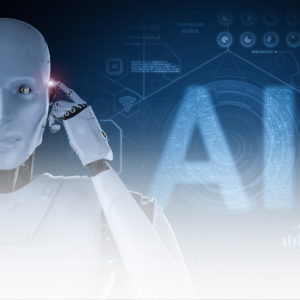Introduction: In today’s fast-paced job market, more employers are turning to automated recruiting tools to streamline the overwhelming influx of resumes. These AI-driven tools promise to sort through applications, identify potential candidates, and ease the burden on HR teams. However, as the use of these tools becomes widespread, concerns arise about potential unintentional discrimination against job applicants, violating employment discrimination laws. To address these issues, both the Equal Employment Opportunity Commission (EEOC) and New York City have recently issued guidance and laws regulating the use of AI in employment decisions. In this blog, we’ll delve into the details of these regulations and explore four essential steps for employers to navigate AI tools in recruiting while ensuring compliance.

- Identify and Understand the Technology Used for Recruitment: The first step for employers is to comprehensively assess the automated tools used in their recruitment process. From large corporations to smaller businesses, most HR teams rely on recruiting tools to streamline operations and boost efficiency. To ensure compliance, employers must gain a clear understanding of each tool’s functionalities and the role they play in the hiring process.
- Determine If AI Tools Qualify as Automated Employment Decision Tools (AEDT): Under the New York City Automated Employment Decision Tools (AEDT) Law, AI-driven tools that generate simplified output to drive hiring decisions fall under its ambit. Determining whether the recruiting technology qualifies as an AEDT requires legal and technological expertise. Employers should consult employment counsel and the technology vendors to ascertain if their AI tools fall under the AEDT definition.
- Conduct Bias Audits for AEDT: If the company’s automated tools meet the criteria of an AEDT, they are required to undergo an annual “bias audit” by an independent auditor. The audit aims to identify and rectify potential biases in the AI algorithms used for hiring decisions. Employers should engage an independent auditor familiar with the technical nuances to conduct these essential audits.
- Comply with Notice Obligations: The NYC law and EEOC guidance outline specific notice requirements for employers using AI tools in recruiting and other employment decisions. Employers must ensure they comply with these obligations, which include providing public notices of AI tool usage. It is vital to review all platforms where notices are posted to ensure applicants are well-informed of the technology’s role in the recruitment process.

Conclusion: The integration of AI tools in recruiting offers unprecedented efficiency and streamlining of HR processes. However, it comes with legal and ethical responsibilities that employers must address. By identifying, auditing, and ensuring compliance with the relevant laws, employers can harness the power of AI while safeguarding against unintentional discrimination. It is crucial to stay informed about the latest regulations and seek counsel when necessary to make well-informed decisions that align with both technological advancements and legal requirements.
Schedule time on our CEO Mark Herschlag’s calendar to discuss insurance, employee benefits, compliance, and more HERE!



